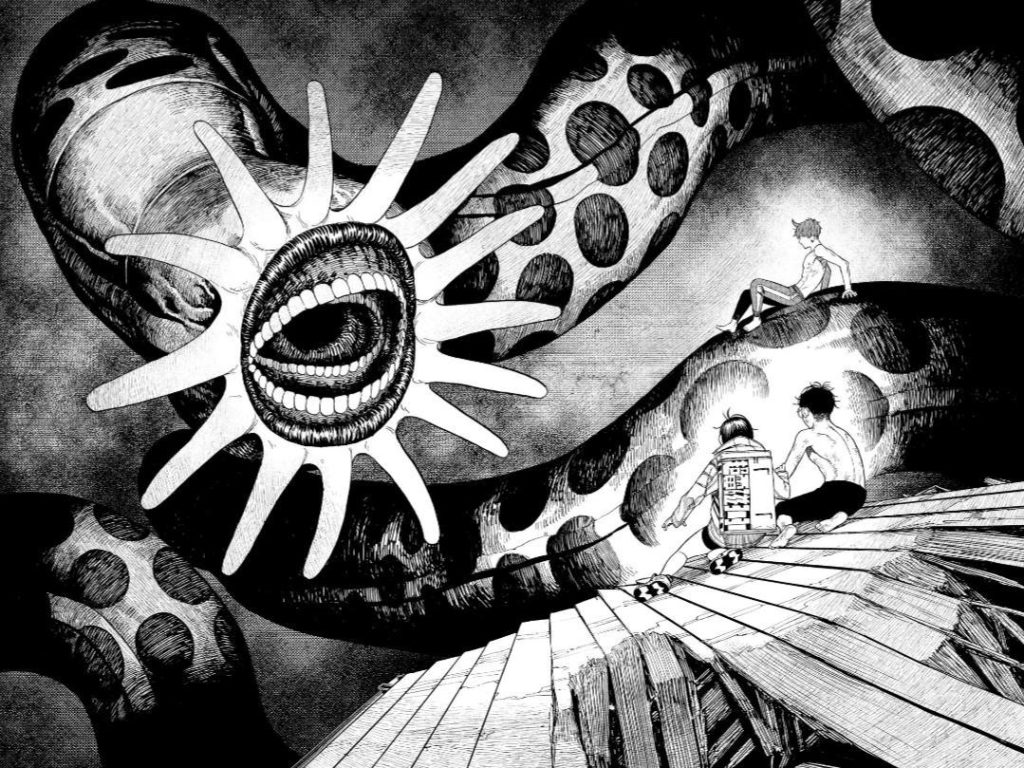
In the vibrant, supernatural world of Dandadan, few creatures evoke as much dread and fascination as the Tsuchinoko. Often mistaken for mere legend, this cryptid—based on folklore and blended with the mythos of the Mongolian Death Worm—emerges as a horrifying antagonist during the Cursed House Arc. This reimagining of the Tsuchinoko adds layers of terror, history, and supernatural intrigue to the story.
Tsuchinoko’s Appearance: A Monstrous Cryptid Reborn
The Tsuchinoko in Dandadan deviates from traditional Japanese folklore, appearing not as a stubby snake but as an enormous worm-like creature. Its serpentine body is covered in a spotted pattern, and its mouth is a gaping, tentacled ring filled with multiple rows of jagged teeth. According to Okarun, this version of the Tsuchinoko is much larger than the average Mongolian Death Worm, typically known to be about 1.5 to 2 meters long.
The Origins of the Tsuchinoko: Worshipped and Feared
The Tsuchinoko was once revered as Orochi-sama, or the Great Snake, by villagers during Japan’s feudal period. This monstrous worm resided inside a nearby volcano, and its hunger triggered volcanic activity. To keep their homes safe, the Kito Family began a horrifying tradition—sacrificing children to appease the Tsuchinoko. This grim practice continued for 200 years, directly leading to the birth of the Evil Eye, another dark entity in the series.
Tsuchinoko in the Cursed House Arc: Plot Overview
Tsuchinoko Awakens Beneath the Cursed House
When the Enjoji family unknowingly moves into the sacrificial house once tied to the Tsuchinoko’s rituals, disaster follows. Under the monster’s psychic influence, the parents fall victim to suicidal thoughts and are hospitalized. Believing the house is cursed, their son Jiji seeks help from Momo and Okarun.
This investigation leads the group underground, where the Tsuchinoko awakens. Despite being worshipped by the Kito Family, the beast devours them and turns its attention to the heroes. Its psychic powers nearly cause Momo and Okarun to take their own lives, forcing Jiji into a desperate fight for survival.
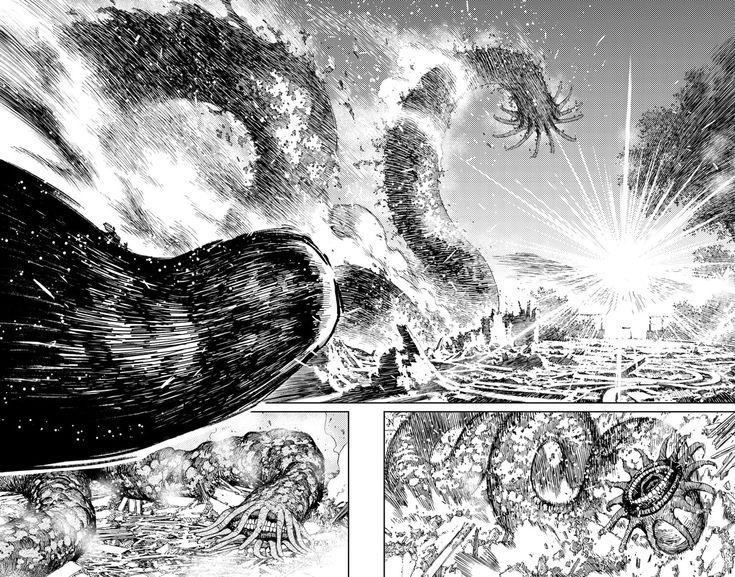
Tsuchinoko vs. The Evil Eye
Just when things seem hopeless, the Evil Eye appears, battling the Tsuchinoko’s mental grip and freeing Momo and Okarun. A brutal showdown ensues, where Okarun decapitates the beast, only for it to regenerate and strike back. The Tsuchinoko unleashes electric shocks, binding mucus, and eventually retreats underground, only to lay poisonous spores as it flees.
Final Battle: Tsuchinoko’s Weakness Exposed
Knowing the Tsuchinoko cannot survive exposure to sunlight, Momo sets the sacrificial house ablaze and has the fire brigade hose the lair with water, forcing the worm to the surface. As it hides behind the burning structure, Momo uses her psychokinesis to hurl a fire truck, destroying the shelter and ultimately killing the Tsuchinoko. A post-battle scene reveals the Kito Family regurgitated from the creature’s belly—still alive.
Tsuchinoko’s Powers and Abilities in Dandadan
Suicidal Psychic Waves
The Tsuchinoko emits waves that manipulate the minds of its victims, urging them toward suicide. This power is highly effective against both normal humans and supernatural beings like espers—though not effective against yokai themselves or spiritually strong individuals.
Regeneration
Decapitation doesn’t stop this beast. The Tsuchinoko can fully regenerate even after severe injury. Its regenerative abilities, however, fail under sunlight, making exposure a key tactic for its defeat.
Electrokinesis
As a Mongolian Death Worm, the Tsuchinoko can discharge electricity from its tentacles, shocking enemies within close range. This power was particularly devastating during its underground confrontation with Momo and the others.
Mucus (Phlegm)
The Tsuchinoko’s sticky mucus serves two purposes: it immobilizes prey and later becomes a coolant. After its death, the same phlegm is used to cool volcanic magma, highlighting its surprising utility.
Toxic Spores
To further defend its territory, the Tsuchinoko releases spores containing venom, weakening those who remain in its subterranean lair too long.
Real-World Inspiration: The Cryptid Behind Tsuchinoko
The Tsuchinoko is rooted in Japanese folklore, typically described as a fat, snake-like creature that’s rarely seen. In modern media, it’s often used as a humorous or mysterious figure.
However, in Dandadan, the Tsuchinoko draws deeper influence from the Mongolian Death Worm—a legendary creature said to inhabit the Gobi Desert. This worm is infamous for spraying acid or delivering electric shocks, abilities mirrored in the manga. There’s even a theory in Dandadan linking the Tsuchinoko to the Minhocão, a Brazilian cryptid described as a massive underground serpent.
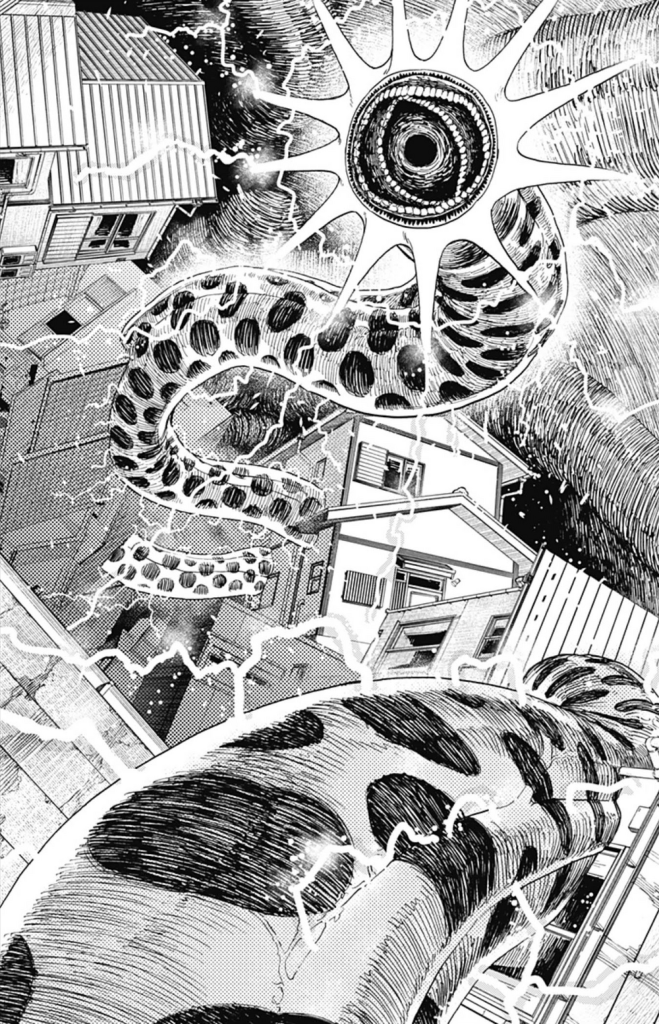
Final Thoughts: Tsuchinoko as a Symbol of Myth and Horror
The Tsuchinoko in Dandadan blends myth, horror, and science fiction into one of the series’ most unforgettable monsters. From psychic manipulation to volcanic threats, it’s a creature that pushes the story—and its characters—to their limits.
Whether seen as a horrifying reinterpretation of Japan’s Tsuchinoko or a supernatural twist on the Mongolian Death Worm, this UMA brings real tension to the Cursed House Arc. Its death is not just a victory over evil but a symbolic end to centuries of blind tradition and fear.
-
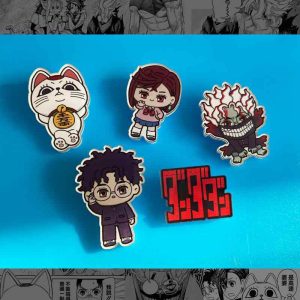 Dandadan Acrylic Pins$9.00 – $22.00
Dandadan Acrylic Pins$9.00 – $22.00 -
 Dandadan Stickers 50 Pieces$9.90
Dandadan Stickers 50 Pieces$9.90 -
 Dandadan Momo Alien Earrings$10.00
Dandadan Momo Alien Earrings$10.00 -
 Dandadan Posters Set of 10$15.00
Dandadan Posters Set of 10$15.00 -
 Dandadan Okarun and Momo T-shirt$19.00
Dandadan Okarun and Momo T-shirt$19.00 -
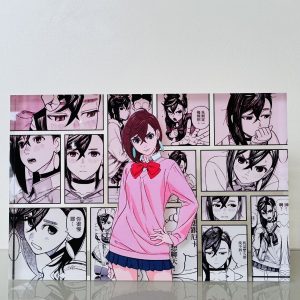 Dandadan Momo Ayase Acrylic Decor$22.00
Dandadan Momo Ayase Acrylic Decor$22.00 -
 Okarun Momo Turbo Granny Sweatshirt$24.00
Okarun Momo Turbo Granny Sweatshirt$24.00 -
 Dandadan Okarun Transformation Night Light$27.00
Dandadan Okarun Transformation Night Light$27.00 -
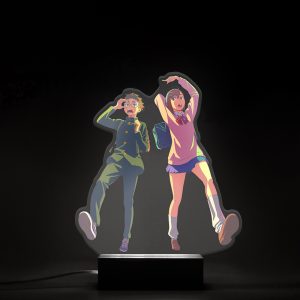 Dandadan Okarun and Momo Night Light$27.00
Dandadan Okarun and Momo Night Light$27.00 -
 Turbo Granny Hair Dryer Figure$28.00
Turbo Granny Hair Dryer Figure$28.00 -
 Dandadan Plushes$28.00
Dandadan Plushes$28.00 -
 Okarun Turbo Granny Form Cosplay Costume$35.00 – $99.00
Okarun Turbo Granny Form Cosplay Costume$35.00 – $99.00
